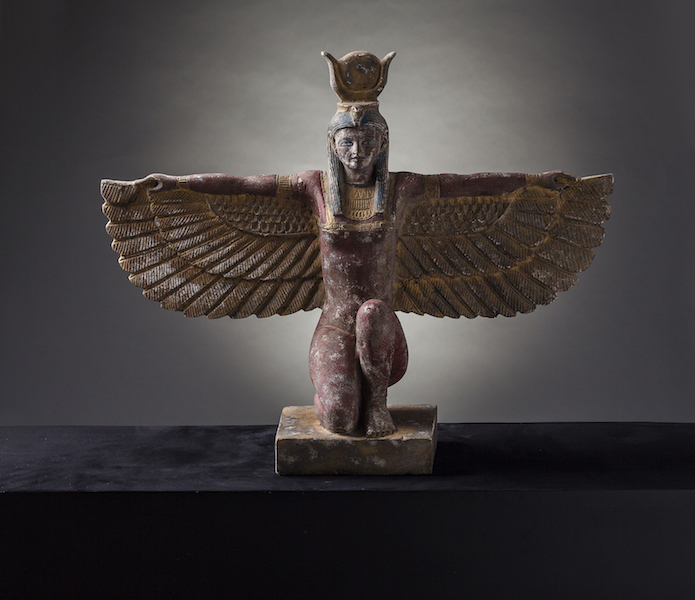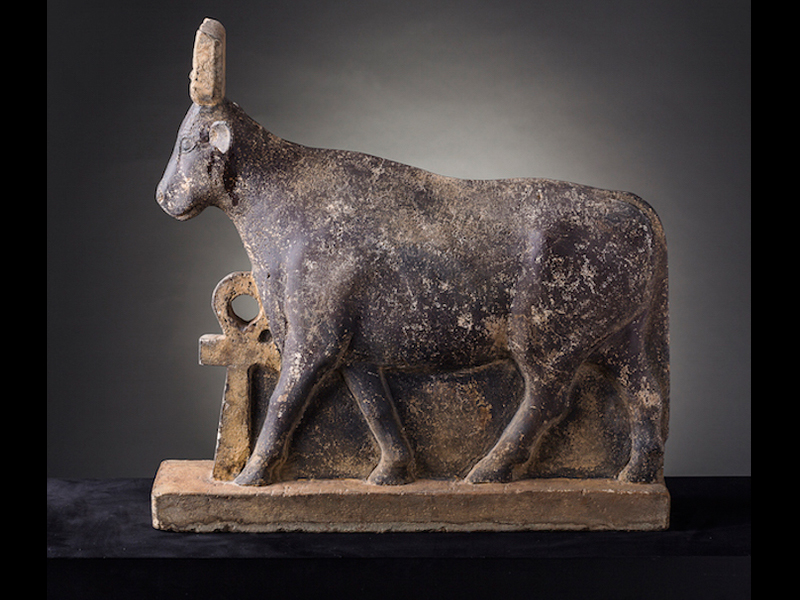ANCIENT EGYPT

The history of ancient Egypt begins towards 5000 BC with two kingdoms: that of the North, which worshipped Horus, and that of the Nile Valley, which honored the god Seth. As the North prevailed over the South in the 4th millennium, towards 3200 BC, the gods and goddesses began to take on, in the Egyptian imagination, human form.We know that this first, big, unified state in the history of mankind had discovered, well before the Bible was written, the existence of a unique and invisible God, whom the Pharaohs hastened to incarnate. What we love about ancient Egyptian art is the impression of order that emanates from it – those clear, precise silhouettes, without any perspective, drawn with solid colours. What is also fascinating is the hieroglyphic writing that was, until the discovery of the Rosetta Stone, an enigma for all. Moreover, this writing is so beautiful it was widely used as ornamentation in architecture and in the tombs.222
-
 Contact us
Contact us
STANDING STATUE OF SENENMUT HOLDING NEFERURE
BLACK STONE STANDING STATUE OF SENENMUT HOLDING NEFERURE (COPY FROM 20TH )
-
.jpg) Contact us
Contact us
A marble statue of a Divine Adoratrice of Amun. (copy)
from the<span class="apple-converted-space"> </span><a title="Twenty-second dynasty of Egypt" href="https://en.wikipedia.org/wiki/Twenty-second_dynasty_of_Egypt">Twenty-second dynasty of Egypt</a>
-
 Contact us
Contact us
Ancient Egyptian bas-relief
Ancient Egyptian bas-relief depicting a procession of agricultural worker with a vizier supervising the work . (copy)
-
.jpg) Contact us
Contact us
Egyptian Marble SPHINX (copy)
Original : Ptolemaic period to roman period , circa 2nd century BC . The Great Sphinx is a large human-headed lion that was carved from a mound of natural rock. It is located in Giza where it guards the front of Khafra's pyramid. <p align="center"> Legends have been told for many years about the Great Sphinx. These stories tell about the powers and mysteries of this sphinx. Some people even believe that there are hidden passageways or rooms underneath the Great Sphinx, but nothing has been found yet. The beginning of one story about the Great Sphinx is written on a <a href="http://www.ancientegypt.co.uk/pyramids/about/sphinx.html">stele</a> between the sphinx's paws. The story reads that one day, a young prince fell asleep next to the Great Sphinx. He had been hunting all day, and was very tired. He dreamt that the Great Sphinx promised that he would become the ruler of Upper and Lower Egypt if he cleared away the sand covering its body (the Great Sphinx was covered up to its neck). The rest of the story is gone, so you will have to use your imagination to work out the ending. This stele was put up by the pharaoh Thutmosis IV who lived around 1400 B.C.
-
.jpg) Contact us
Contact us
Alabaster Egyptian Royal Canopy Boat (copy)
There were many different types of boats such as the warship. The warship was a boat that was steered by a large bladed oar in the stern; it usually had a wooden hull cloth sail and rigging of papyrus fiber.. Noblemen used grand boats for business and pleasure. The sun boat was used to carry the sun god Rah on his daily journey from one side of the world to the other. Huge river barges towed by a fleet of small boats carrying heavy cargo such as stones were called cargo. Huge canopy boats for the pharaoh were called royal boats. Without boats the Egyptians would not have been able to travel from place to place getting valuable items.
-
.jpg) Contact us
Contact us
Bastet was a protective goddess (COPY)
<p style="text-align: left;"> The cat was a symbol of Bastet. The ancient Egyptians made many statues of cats like this one to honour Bastet. <p style="text-align: left;"> Bastet was one of the daughters of the sun god, Ra. A great temple was built in her honour at Bubastis in the Delta. <p style="text-align: left;">
-
.jpg) Contact us
Contact us
Alabaster Statue of Horus (copy)
<p align="center"> According to a myth, Horus had a fight with his uncle Seth (who had killed his father Osiris). Seth tore out his left eye, but the god Thoth restored it. The Eye of Horus, or<em>wedjat</em>, came to stand for making whole, or healing. This is why it was used as amulets, for protection and strength. It was even painted on boats to protect them. Today, in places like Egypt and Greece, boats still have Horus eyes on them. <p align="center"> <p align="center"> Horus was worshipped all over Egypt, but his main temple was at a place called Edfu, which is south of Luxor. <p align="center"> In the Ptolemaic period (332-30BC) the temple was rebuilt, and today it is the best-preserved ancient temple in Egypt. You can still see the statues of Horus staring angrily ahead (he's still angry at Seth!)
-
.jpg) Contact us
Contact us
Nefertiti Bust (copy)
Nefertiti (ca. 1370 BC - ca. 1330 BC) was the Great Royal Wife (chief consort) of the Egyptian Pharaoh Akhenaten. Nefertiti and her husband were known for a religious revolution, in which they worshiped one god only, Aten, or the sun disc. Her name roughly translates to "the beautiful one is come". She also shares her name with a type of elongated gold bead that she was often portrayed as wearing, known as "nefer" beads. Famed throughout the ancient world for her outstanding beauty, Nefertiti remains the one of the most well known Queen of Egypt. Though Akhenaten had several wives, Queen Nefertiti was his chief wife.
-
.jpg) Contact us
Contact us
Senenmut (copy)
Original 18th Dynasty 1475 BC A "block" granite statue of Senenmut and Neferure who was the only child of Hatshepsut and Tuthmosis 11. Senenmut was her tutor. Senenmut held many high official positions during the reign of Hatshepsut. He was the Queen's chief architect and was in charge of the construction of her great temple at Deir el-Bahri. Despite his humble origins, Senenmut rose through the ranks of the court to become Queen Hatshepsut’s closest advisor, and tutor to her daughter Neferure. He held many high official positions during the reign of Hatshepsut. He was the Queen's chief architect and was in charge of the construction of her great temple at Deir el-Bahri.
-
 Contact us
Contact us
57
desc
-
.jpg) Contact us
Contact us
HATSHEPSUT QUEEN (COPY)
HATSHEPSUT QUEEN -PHARAOH HEAD IN ALABASTER
-
 Contact us
Contact us
Celestial Cow Hathor in cow form.
From the earliest dynastic period and the Narmer Palette with the figure of the goddess Bat, believed to be a precursor to the popular HetHert - ; more commonly known as Hathor, the imagery of a celestial or divine cow has endured. Though Aset (Isis) and Hathor both are commonly shown with horns and a solar disk as part of their symbolism, only Hathor has bovine ears.







